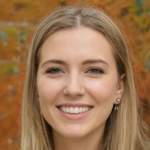What Are the Main Differences Between Salary and Hourly Paystubs?
How you manage life and your profession sometimes depends on how much money you earn and how you get it. Salaries and hourly pays are two of the most popular methods to pay workers. But first, how do these two compensation types differ?
For one thing, a salaried employee is often ineligible for overtime hourly rate or must receive the minimum wage. On the other hand, an hourly employee receives the federal minimum wage and are eligible for overtime hourly rate.
Employers need to ensure their workers get the correct pay stubs and ensure compliance with federal and state laws. Using our paystub generator software you can make sure this isn't an issue for your business. If you feel payroll isn't an issue then you can still always try and find betters ways to manage it.
Understanding the differences between salary vs. hourly pay stub can also help employees decide if their next job is the right one or not. Generally, the critical distinction between salary and hourly pay is evident primarily in bonuses, benefits, and taxes.
If you would like to know anything more about paystubs them please check out our article, where we talked about how your business needs paystubs right now.

Salary Vs. Hourly Pays
To understand the difference between salaried and hourly employees, we first need to know how each works.
How Does Salary Pay Work and Who is a Salaried Employee?
When people work for a salary, they’re paid based on a predetermined annual amount, known as a salary. A salary refers to a predefined amount of money that an employee regularly receives, regardless of the quality or quantity of the person's labour. Some salaried employees earn a contract of employment.
Salaried employees are people whose pay checks come in the same amount and at a regular interval, usually monthly. An annual salary is an employment contract that specifies how much an employee will receive for their work duration until they renegotiate.
A pay check carries with it a feeling of safety. Employers may simply reduce a non-exempt employee's hours, but renegotiating pay is more complicated.
Employers pay salaries based on a 40 hour a week arrangement, but the workers may work for fewer or more hours and still receive the same amount.
Because they have a fixed annual salary, these employees do not qualify for overtime hourly rate. Employers may pay them monthly, bimonthly, weekly, or biweekly salary basis.

How Does Hourly Pay Work and Who are Hourly Employees?
An hourly worker differs from salaried workers in that their employers compensate them for the total number of hours they work. Hence, if the employer determines that they need your services for longer hours, they have to pay for the extra hour.
Legally, overtime is time and a half, but some companies may pay extra during the holidays. But unless your employment contract with the company specifies this, the company does not necessarily need to fulfil pay extra.
People working in a well-compensated industry with lots of overtime hours may find themselves bringing home more money than salaried workers.
Hourly jobs are also quite flexible since hourly employees are paid based on how many hours they work. This flexibility allows them to easily separate their work lives from personal lives, allowing them to focus on their families, other paying jobs, careers, and hobbies.
Salary Vs. Hourly Rights
The Fair Labour Standards Act (FLSA) offers you some rights as an hourly wage employee. These FLSA regulations include required overtime compensation for hours worked more than 40 per week, as well as a state-determined minimum wage for employees.
Most salaried employees are exempt from these privileges, but they must first fulfil specific criteria, such as:
- Performing high level job duties according to FLSA outlines
- Must have an annual minimum salary
- Must not be qualified for overtime pay

Exempt and Non-exempt Employees
The notion of exempt and non-exempt workers is inextricably linked to whether someone is paid hourly or on a salary. Thus, it's essential to understand the distinction between these classes of workers. After all, misclassifying employees may result in underpaying them. According to the FLSA, it is also illegal.
But what exactly do we mean by exempt and non-exempt employees? We've listed essential things to know regarding non-exempt and exempt employees to help you stay compliant.
Exempt Employees
Exempt employees are excused from overtime compensation when they work more than 40 hours a week, earn a specific amount of money and complete specific tasks. The minimum wage rules do not apply to these classes of workers.
Before you can be an exempt employee, you must earn above the minimum wage. The FLSA requires that anybody working as an exempt employee receive at least $684 weekly or $35,568 yearly starting from January 1, 2020.
Employers may pay you less than the minimum wage in some situations, such as when you work in a job that receives tips. States set the minimum wages and salaries for these kinds of professions.
In addition, an exempt employee’s job description must be computer-related, outside sales, administrative, executive, or professional before they can qualify for an exemption. However, exemptions don't depend on a person's title. It usually depends on the worker's job duties and pays.
Typically, a production assistant fits into the exempt employee class. However, if they work for a company that pays them a salary, they would be exempt.

Non-exempt Employees
On the other hand, a non-exempt worker is eligible for overtime pay after completing a 40-hour workweek. Employees in the manufacturing industry may not have up to a 40-hour workweek but may still get overtime after working a specific number of hours per day.
Non exempt employees often work in manual labour or blue-collar jobs such as first responders, construction workers, or cashiers. Although most of these workers receive an hourly rate, they can also receive a salary.
The minimum income for a salaried employee and an hourly worker are significantly different. When you divide the $684 minimum pay for an exempt employee by 40 hours worked each week, you get $17.10. Because of this, a minimum wage worker's hourly compensation may vary significantly from state to state.
Salaried and Hourly Pay stub - Pros and Cons
Salaried and hourly employees have unique benefits and downfalls. For instance, a salaried employee may benefit from various perks, such as regular payments and employee incentives, which can improve their overall job satisfaction, productivity, and performance. An hourly employee may not have access to any of these incentives.
As we point out the benefits, we must inform you about the possible downsides that'll inform your decision to opt for salaried or hourly pay. The understanding of the distinctions will also help employers decide whether to hire hourly or salaried employees.

Also read: What Are 8 Ways To Increase Employee Loyalty?
Salaried Pay stub Pros
Some of the benefits of salaried pay over hourly pay stub include:
- Eligibility for better benefits packages: Although some hourly positions have impressive benefits, salaried employees often get higher pay and perks than their hourly colleagues. Such benefits include better incentives, healthcare coverage, retirement plans, paid time off and sick days, and 401(k) contributions
Bonuses are also available for salaried employees. In addition, if a company is considering promoting an employee, a salaried employee often gets preferential treatment over an hourly employee, resulting in quicker advancement within the organization.
- Potentially higher income: As we mentioned earlier, your equivalent hourly pay must be more than the federal minimum wage before you can qualify as an exempt salaried worker. While some hourly workers earn huge income in specialized areas, the higher-paying professions are salaried.
- More flexible working hours: Salaried employees earn a fixed amount on a monthly or yearly basis, allowing them to take a break from work to return later. Employees may work when they're in the appropriate frame of mind, resulting in increased production.
- Steady pay checks: Employees get a regular payment according to the payroll schedule because of how salary pay operates. These employees enjoy the peace of mind that comes with salaried positions since they don't have to guess how much their employer will pay them at the end of the month.
It is essential to plan financially. Having a steady income enables you to prepare for the future and feel confident in your choices. And, although you may wind up working more on pay at times, a salary allows you to budget far more effectively.
- It’s easier to process payroll: Lastly, employers do not have to compute complicated overtime since workers' compensation stays constant while working longer hours.

Cons
Though salary jobs provide much more significant financial security, the salary vs. hourly wage debate is not without its arguments against salary compensation. Here are some of the downsides of salary pay:
- Ineligibility for overtime wages: Even when salaried employees work beyond 40 hours, they are not entitled to overtime wages. However, if the employee does not meet all the responsibilities of the exempt job, he may find a way around it.
- Poor work-life balance: Some jobs require a salaried employee to make them accessible and available whenever there's an urgent call, email, or text, even if they’re not on the clock. This experience may prove challenging in the long run, leading to stress and burnout with little time for life outside work.
- Work may extend beyond working hours: When companies have urgent projects to deliver within a short period, they might mandate their employees to work extra time, including weekends. In most cases, such overtime hours don't come with any extra pay. Also, employees on a salary may attempt to push themselves harder than usual to stand out among their colleagues.
- Restrictions from making money elsewhere: The lack of spare time from salaried jobs can restrict employees from picking up a side job if they need extra cash to supplement their income.
Pros of Hourly Pay
Just like salaried pay, hourly pay has its specific benefits. Let’s check them out.
- Overtime rate eligibility: Hourly workers may substantially improve their gross pay and take-home pay by receiving overtime pay when they do more than 40 hours/week. These workers have
- Work flexibility: Hourly pays may benefit students, those still in school, or just starting in their professions because of the flexibility it offers. You'll mostly find most entry-level positions starting with hourly pay, making it an excellent choice for an entry-level job.
Some people may opt to work in an hourly position that pays more than other employment or contract work to have more job flexibility and the freedom of freelancing work.
- Fewer responsibilities and better work-life balance: Salaried employees have greater responsibilities than paid per hour. Typically, an hourly employee doesn’t burden himself with the responsibility of supervising others while completing their tasks.
Also, because an hourly worker does not need to work overtime, it's easier to balance their work and personal lives. They can enjoy their breaks and holidays without fear of being called for an emergency task at work.

Cons
- Fewer benefits: One of the most significant downsides of hourly pay is the limited benefits it involves. For instance, there may be implications on benefits such as healthcare coverage eligibility. Companies with over 50 employees must offer healthcare coverage to their full time hourly employees who work 30 hours or more per week. Consequently, some companies limit hourly employees to less than 30 hours in a week to evade the requirement.
- Hours can change: depending on the sector, hourly employees may not have a consistent work schedule. For instance, they might work for 40 hours this week and work 30 hours the following week.
Hourly workers are usually the first to become victims if a company decides to downsize due to financial difficulty. An employer may quickly choose to reduce how many hours you work until business recovers, but it's not as straightforward if it were a salary position.
- No steady salary: Since hourly employees' pay depends on the number of hours they work, they must be mindful of unpaid time off to prevent losing money since they do not get regular payments.
- Constant job hunting: Typically, hourly work often involves a lot of job hunting. Most hourly employees probably hop about from job to job if their employer reduces their working hours in a week. Job hunting may be taxing, and you may get exhausted from the never-ending job search.
Also read: Understanding Pay Stub Abbreviations
What is Overtime Pay?
Non-exempt workers working more than 40 hours a week must get overtime pay, according to the FLSA. To avoid fines, employee lawsuits, and even legal punishment, you must follow these federal labour laws. Furthermore, several states have their wage regulations, which you must observe as well.
As we stated earlier, when employees work overtime, they're entitled to receive overtime pay, usually 1.5 times their regular hourly rate. For instance, an hourly employee that receives $20 per hour is eligible for an hourly overtime pay rate of $30.

Final Thoughts on Salaried vs. Hourly Pay Stub
Whether to pay an employee on an hourly or salary basis should depend on some factors. These factors include whether they are exempt or non-exempt, your state or federal law and if you intend to provide specific benefit packages.
As you begin your company, be sure that the workers you designate as salaried employees fulfil all of the criteria to exclude them from overtime. These criteria include:
- Paying them the minimum wage as the FLSA specified
- Ensuring that their work description meets the other exempt criteria
For hourly workers:
- Ensure you’re carefully tracking hours they worked in a day
- Ensure they’re receiving at least the federal or state minimum wage
- Ensure they receive their due overtime pay for every hour beyond the 40-hours standard working hours.















